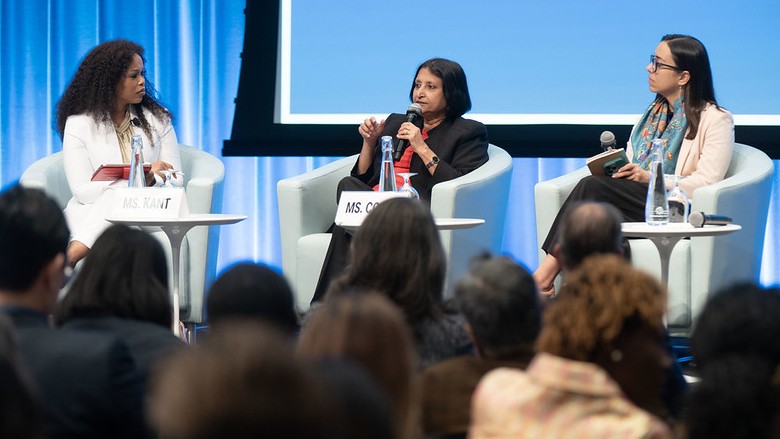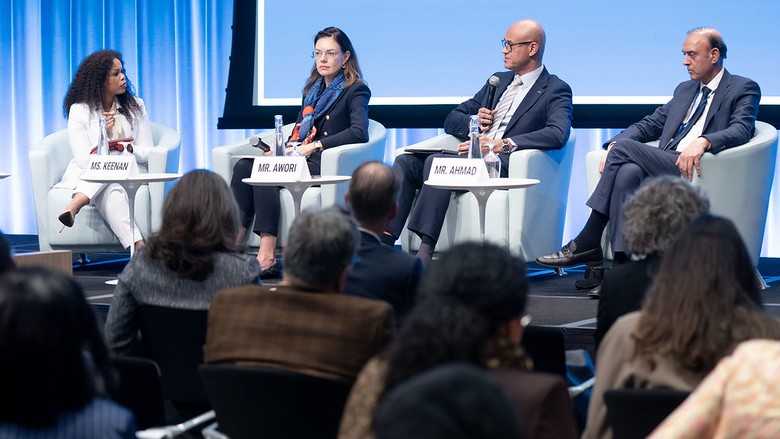“If we want a future that really considers the needs of women [in any field], we need more women in that field,” said Costa. She highlighted the gap between the talent women demonstrate in training programs and the obstacle—like care burdens and investor skepticism—that continue to block their entry into careers or leadership. For Costa, if women aren’t shaping the tools and markets, efforts to help them work or start businesses won’t go far.
Governor Jameel Ahmad of the State Bank of Pakistan described his country’s success in supporting women’s financial inclusion, one prerequisite to women starting businesses. Through the Banking on Equality strategy, female bank accounts in Pakistan increased from 20 million in 2021 to 37 million in 2025. In July 2025, Pakistan joined the WE Finance Code, a global framework launched by the Women Entrepreneurs Finance Initiative (We-Fi) that helps financial institutions and regulators advance women’s access to capital through leadership commitment, the use of sex-disaggregated data, and innovative solutions.
“We asked banks not just to provide services, but to address underlying issues, capacity building and financial literacy among women,” Ahmad said, adding that other ingredients also contributed to the increase in inclusion: senior champions inside financial institutions, requirements for sex-disaggregated reporting, and clear targets.
“All elements, policy change, system reform, capital, education, capacity building, mentorship, networks, visibility, all need to be present,” said Charlotte Keenan, Managing Director and Global Head of Goldman Sachs’s 10,000 Women, an initiative that provides women entrepreneurs in developing countries with access to capital, training and networking opportunities.
Together in 2014, the World Bank Group’s International Finance Corporation (IFC) and 10,000 Women program created the Women Entrepreneurs Opportunity Facility (WEOF), to provide capital to women-owned small and medium-sized businesses.
After 10 years of impact, Keenan said, 10,000 Women has enabled loans to 267,000 women, mobilizing three billion dollars in capital.
“If we extrapolate that forward that’s over 50,000 jobs created,” Keenan said.
Keenan noted that financial products perform better when they are designed around women’s realities from the start, including documentation hurdles, time constraints, and the need for advisory support. Keenan underscored the value of peer networks and mentoring for women. Turning loans into durable business growth requires not just access to money but the capability to use it well, she said.


